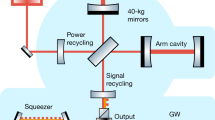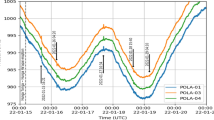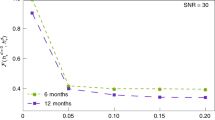Abstract
IN future, the limit of detection of faint radio sources, at wave-lengths of 10 cm and less, is likely to be set by the radiation from water vapour and rain in the troposphere1,2. The dominant factor is the minute-to-minute fluctuations in received power, which may be as much as 2° K at λ 3.7 cm. These fluctuations are greatly in excess of the receiver noise fluctuations, and may destroy all the benefit of using a modern low-noise amplifier such as a maser.
This is a preview of subscription content, access via your institution
Access options
Subscribe to this journal
Receive 51 print issues and online access
$199.00 per year
only $3.90 per issue
Buy this article
- Purchase on SpringerLink
- Instant access to full article PDF
Prices may be subject to local taxes which are calculated during checkout
Similar content being viewed by others
References
Orhaug, T., Pub. N.R.A.O., Greenbank, U.S.A., 1, No. 14 (Oct. 1962).
Hogg, D. C., and Semplak, R. A., Bell Syst. Tech. J., 40, 1331 (1961).
Author information
Authors and Affiliations
Rights and permissions
About this article
Cite this article
CONWAY, R. Measurement of Radio Sources at Centimetre Wave-lengths. Nature 199, 1177 (1963). https://doi.org/10.1038/1991177a0
Issue Date:
DOI: https://doi.org/10.1038/1991177a0



